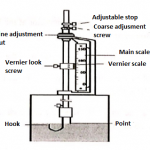Actual Innocence Summary
Actual Innocence Summary
In the first chapter titled the “innocent project” the wrongful conviction of Marison Coakley is discussed. He was a black man living in New York. He was a daily wage worker and was at a prayer meeting at the time of the rape, which he was charged and convicted with. Scheck and Neufeld made it possible to free Marison with the help of a student from Cardozo Criminal Law Clinic. Their evidence included Blood type mismatch with the rapist semen and prosecutorial misconduct.
The second chapter titled “the invention” is about the arrival of DNA testing. In this chapter the authors have described how different techniques can be used to replicate very little amount DNA that can be then used for testing purposes. DNA can be replicated several times with the help of PCR (polymerase chain reaction). DNA was later used to prove innocent many wrongfully accused people.
Reflection
The main purpose of the authors in the two chapter is to suggest that it is very possible for the judicial justice system to wrongfully accuse people with crimes they never committed. The author believes that new scientific methods can be incorporated to the judicial justice system to help innocent people void sentences for crimes they never committed. The authors are passionate about the emergence of DNA testing and they believe it can be used to save people from being wrongfully convicted. The chapters are written in clear words and the content of these chapters is based on facts rather than mere speculations. When I was reading the chapters I was able to grasp the main idea of the text. The content is not based on general statements and there are specific points discussed. The chapters may be written in the past, but they are still valid in the present age.





